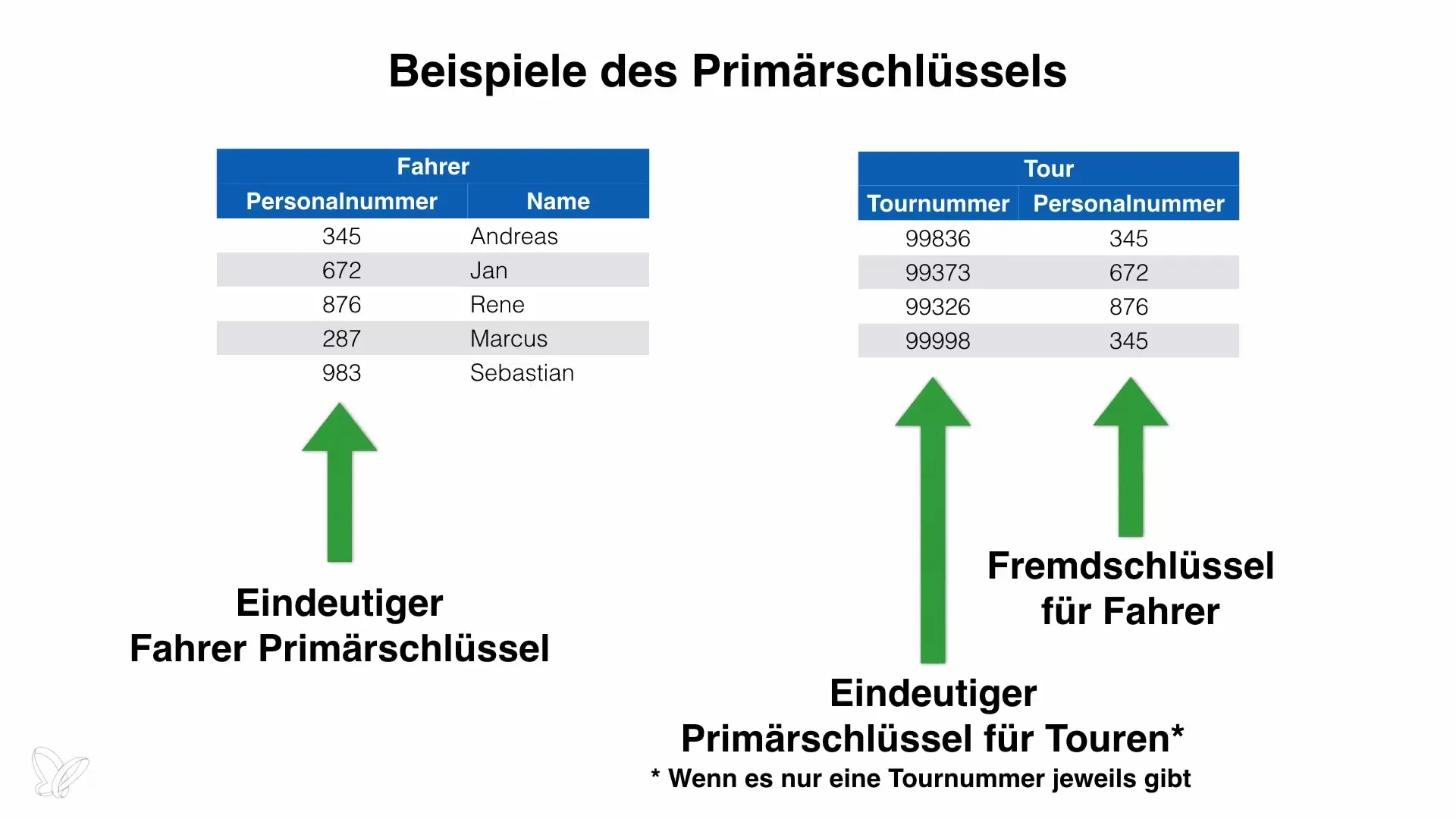Every database consists of tables, and each table is a collection of records. To effectively link these records, unique identities are necessary. This is where the primary key comes into play. It ensures that each record not only exists but can also be uniquely identified. In this guide, you will learn what a primary key is, how to use it in Microsoft Access, and what role it plays in relation to foreign keys.
Main findings
- A primary key is a unique value that identifies each row in a table.
- An auto-incrementing value is often used to create a unique ID.
- The primary key is essential for establishing relationships between different tables.
- A foreign key does not have to be unique, but it must have the same data type as the primary key.
Step-by-step guide
To understand and apply the primary key in Access, follow these steps:
1. What is a primary key?
First, you should understand what exactly a primary key is. A primary key is a unique value that is present in a specific table column and ensures that no record is duplicated. This is important for maintaining data integrity. The primary key is the key to the relationships between tables.

2. Use of auto-incrementing values
Typically, a primary key is implemented using an auto-incrementing value. An auto-incrementing value ensures that each new record automatically receives a unique ID that increases sequentially. This means that when creating a new record, it will for example receive an ID of 1, 2, 3, and so on. This is particularly useful for ensuring the traceability and uniqueness of records.
3. Examples of primary keys
A clear example of a primary key is the employee number of a driver in a company. Each driver has a unique employee number that identifies them. If you create a table of drivers, the employee number is the primary key for that table.
4. Relationships between tables
To understand the interplay between primary keys and other tables, let's look at the connection between drivers and routes. In a second table that lists routes, we need a reference to the employee number of the driver to establish the relationship. This reference is called a foreign key.

5. Understanding foreign keys
A foreign key does not have to be unique. It is often used in another table to determine which routes a driver has taken. The foreign key has the same data type as the primary key, meaning that integer values are used to create a reference.
6. Uniqueness and ambiguity
A driver can drive multiple routes. Therefore, the foreign key may appear multiple times in the routes table. This allows multiple records (routes) to be assigned to a single driver. It is important that the primary key for the routes, like the route number, remains unique.
7. Ensuring data integrity
To ensure that no driver receives the same route number multiple times, the principle of the primary key applies. Each route number is assigned only once, thus maintaining data integrity. This allows you to immediately see which route is assigned to a particular driver.

8. Advanced topics: Indexing and optimization
After we have understood the basics of the primary key and its role in database architecture, we will also look into topics such as indexing. Indexes play a crucial role in optimizing database performance.
Summary - Primary Key: The key to structured data in Access
The primary key is the foundation of any database structure. This system ensures data integrity and enables effective management of relationships between different records. You have now learned the basics of the primary key as well as its use in conjunction with foreign keys. Use this knowledge to structure and efficiently manage your databases in Access.
Frequently asked questions
What is a primary key?A primary key is a unique value that identifies each row in a table.
How is a primary key used in Access?In Access, an auto-incrementing value is often used to ensure that each new record receives a unique ID.
Can a foreign key also be non-unique?Yes, a foreign key does not have to be unique, but it must have the same data type as the primary key.
How is the relationship between two tables established?The relationship is created by the primary key of the first table and the foreign key of the second table.


